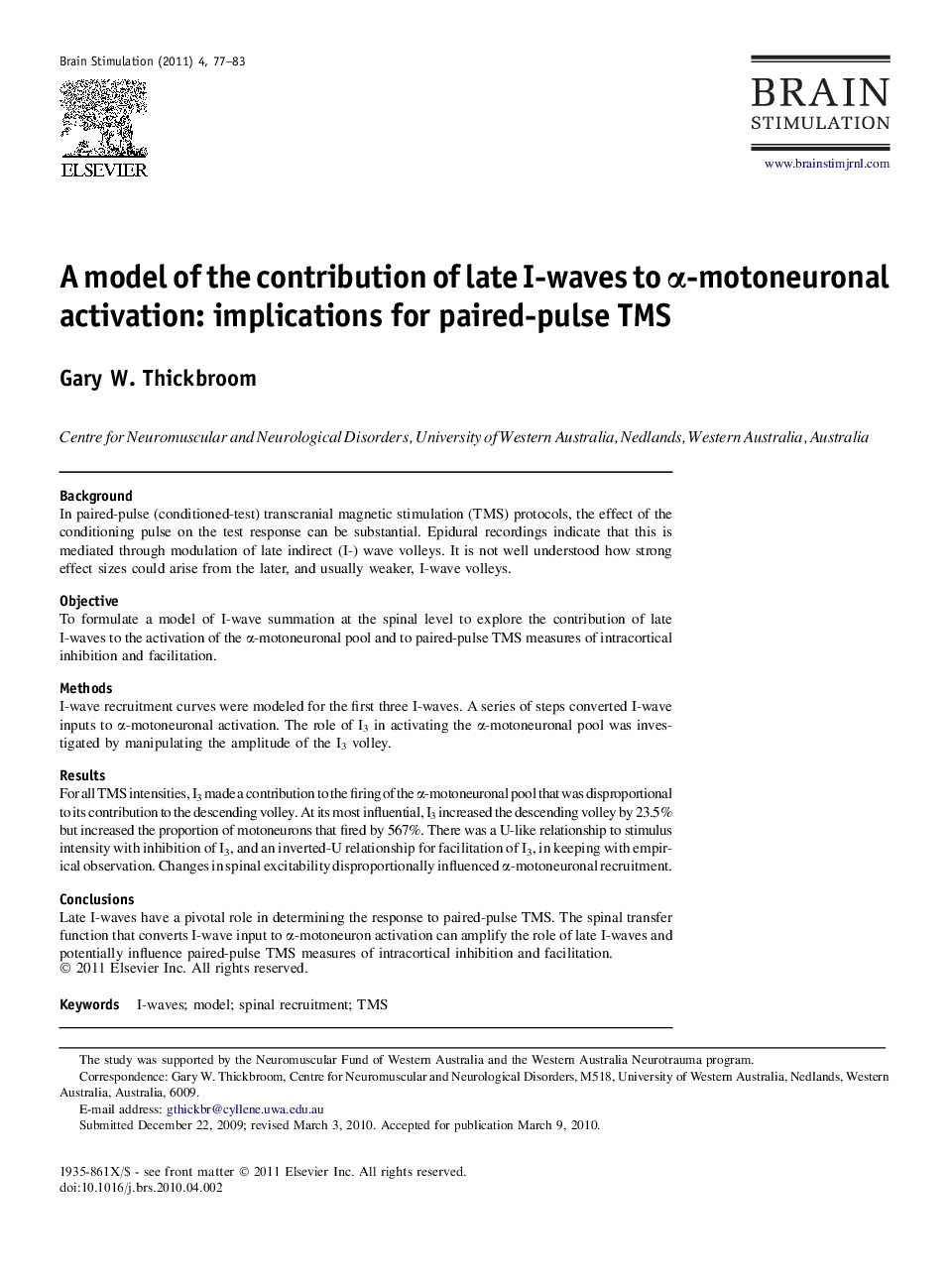| Article ID | Journal | Published Year | Pages | File Type |
|---|---|---|---|---|
| 3039228 | Brain Stimulation | 2011 | 7 Pages |
BackgroundIn paired-pulse (conditioned-test) transcranial magnetic stimulation (TMS) protocols, the effect of the conditioning pulse on the test response can be substantial. Epidural recordings indicate that this is mediated through modulation of late indirect (I-) wave volleys. It is not well understood how strong effect sizes could arise from the later, and usually weaker, I-wave volleys.ObjectiveTo formulate a model of I-wave summation at the spinal level to explore the contribution of late I-waves to the activation of the α-motoneuronal pool and to paired-pulse TMS measures of intracortical inhibition and facilitation.MethodsI-wave recruitment curves were modeled for the first three I-waves. A series of steps converted I-wave inputs to α-motoneuronal activation. The role of I3 in activating the α-motoneuronal pool was investigated by manipulating the amplitude of the I3 volley.ResultsFor all TMS intensities, I3 made a contribution to the firing of the α-motoneuronal pool that was disproportional to its contribution to the descending volley. At its most influential, I3 increased the descending volley by 23.5% but increased the proportion of motoneurons that fired by 567%. There was a U-like relationship to stimulus intensity with inhibition of I3, and an inverted-U relationship for facilitation of I3, in keeping with empirical observation. Changes in spinal excitability disproportionally influenced α-motoneuronal recruitment.ConclusionsLate I-waves have a pivotal role in determining the response to paired-pulse TMS. The spinal transfer function that converts I-wave input to α-motoneuron activation can amplify the role of late I-waves and potentially influence paired-pulse TMS measures of intracortical inhibition and facilitation.
